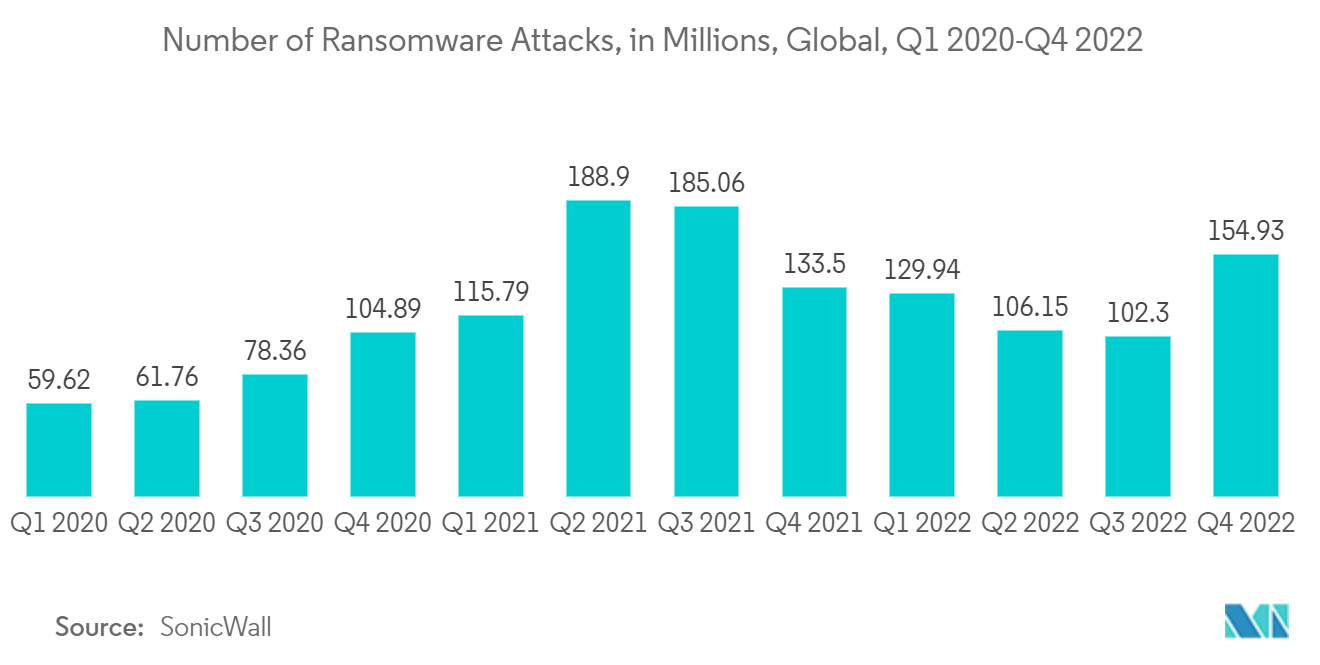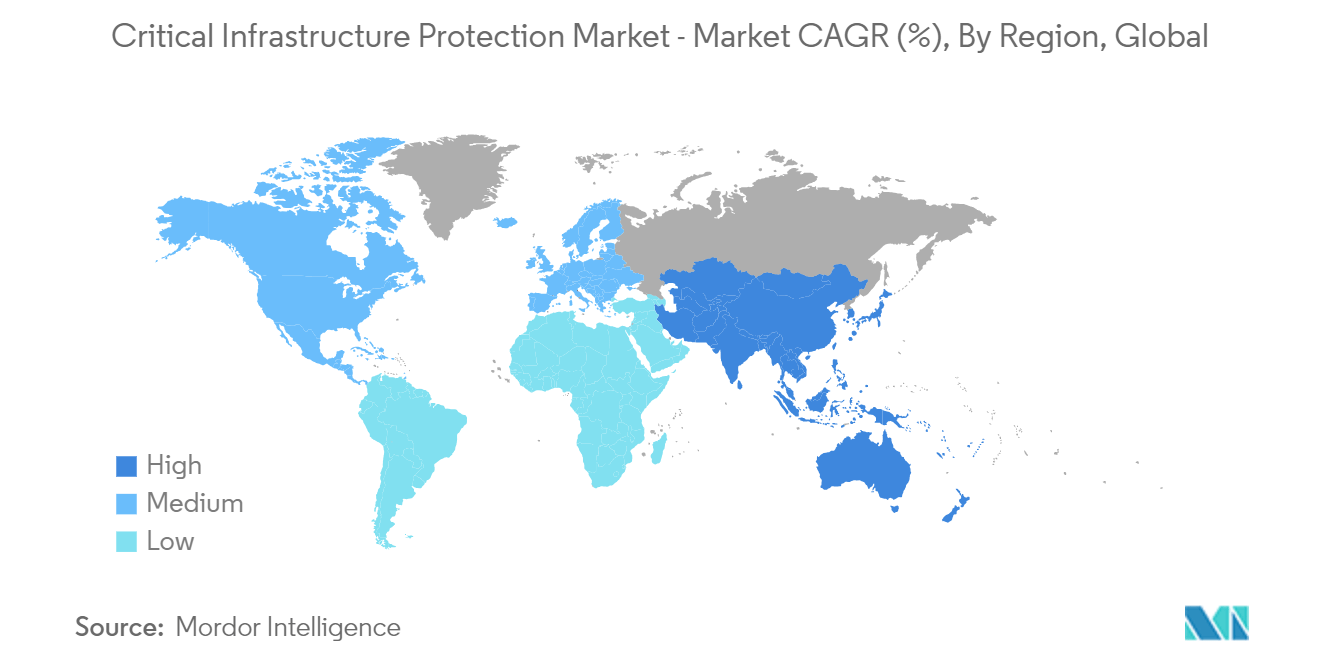Market Trends of Critical Infrastructure Protection Industry
Maintenance and Support Services to Witness Major Growth
- . Maintenance and support services are a set of procedures designed to ensure the performance of the service for business continuity. These services include maintenance of hardware and software systems on a regular basis. Maintenance of critical infrastructure is essential for continuous operation. Damage to a critical infrastructure may have a significant negative impact; therefore, business development managers and owners of critical infrastructure are investing significantly to protect the core of business operations and critical security-related areas of the organization.
- Unlike IT networks, the lifetimes of operational technology (OT) components are in the range of decades, varying from 15 to 25 years, and these systems become an easy target for cyberattacks because of the vulnerabilities and holes in such outdated software and hardware. Therefore, they need to be maintained regularly.
- Energy and power generation and distribution networks are observing a growing demand for maintenance and support services to keep pace with dramatically increasing electricity demand. The energy sector is uniquely critical because it enables all other critical infrastructure sectors. Without reliable and secure electricity networks, economies and communities cannot function. This has increased the importance of cybersecurity for energy and utility companies because they face the challenges of protecting vast supply chains, electricity grids, and customer information from cyber threats.
- In October 2023, Google Cloud joined the E-ISAC Vendor Affiliate Program to contribute to the electricity industry's collective defense by providing subject matter expertise on critical vulnerabilities and security solutions. As a Vendor Affiliate Program partner, Google Cloud will devote experts to working alongside industry leaders to transform and secure the electricity sector. The company will bring the Google Cybersecurity Action Team to protect the electricity industry against cyberattacks. Google has also committed to investing at least USD 10 billion over five years to advance cybersecurity.
- Overall, the growing collaboration between industry and vendors for the maintenance and support of supply chain interdependencies and strengthening their collective defense against growing cyberattacks that include ransomware, supply chain compromise, botnets, and worm attacks to protect critical infrastructure is propelling the segment growth in the market studied.

North America is Expected to Hold Significant Market Share
- The adoption of critical infrastructure protection (CIP) in the United States has been a comprehensive and evolving process driven by the need to secure vital systems and assets, ensuring national security.
- In the energy sector, regulatory bodies like the Federal Energy Regulatory Commission (FERC) enforce standards to ensure the security of power grids and energy infrastructure. The increasing digitization of power grids and utilities necessitates a strong focus on cybersecurity. The Department of Homeland Security (DHS) and the Cybersecurity and Infrastructure Security Agency (CISA) play vital roles in protecting these systems from cyber threats.
- The United States electricity segment contains more than 6,413 power plants with approximately 1,075 gigawatts of installed generation. The energy and power industry across the United States is experiencing a significant uptake of RADAR security technologies to safeguard critical assets. Concerns regarding the economy, public safety, operational continuity, and environmental well-being have elevated cybersecurity as a foremost priority for power and utility companies.
- Smart cities and transportation systems heavily rely on digital technologies, which expose them to cyberattacks. CIP develops robust cybersecurity strategies and threat intelligence to mitigate these risks. The transportation sector falls under the purview of the Department of Transportation (DoT), which enforces regulations for securing transportation infrastructure, including airports and mass transit systems. The Department of Transportation is leading federal initiatives to revamp the country's infrastructure. They have a major focus on integrating cybersecurity through significant investments under the Bipartisan Infrastructure Law. This endeavor primarily takes place at the state and local levels. Moreover, in May 2023, Illinois Tech's initiatives received a USD 10 million federal grant to establish a new Tier 1 transportation center, further strengthening cybersecurity in navigation systems.
- In March 2023, the Federal Bureau of Investigation (FBI) published a report. It stated that in the previous year, the FBI received reports of ransomware attacks across the country, with more than one-third affecting organizations in the critical infrastructure sectors. Out of the 2,385 ransomware incidents reported, 870 targeted critical infrastructure entities. The high incidence of ransomware attacks targeting critical infrastructure sectors underscores the need for robust critical infrastructure protection measures. In reference to this, in May 2023, the US Cybersecurity & Infrastructure Security Agency (CISA) launched the Ransomware Vulnerability Warning Pilot (RVWP) program to help secure critical infrastructure organizations to protect their systems from ransomware attacks.
- The Canadian Government, primarily through Public Safety Canada, has been actively engaged in coordinating and enhancing critical infrastructure protection. With the increasing importance of digital infrastructure, Canada has been concentrating on enhancing cyber security for critical systems. This includes regulations and standards to safeguard against cyber threats.
- As per the Canadian Government, ransomware is almost certainly the primary cyber threat to the reliable supply of oil and gas to Canadians, and the most likely targets for cyber threat actors intending to disrupt the oil and gas supply in Canada are bottlenecks in the oil transmission and processing stages. Potential targets include large-diameter pipelines' business and OT networks, transfer terminals, and major refining facilities.

